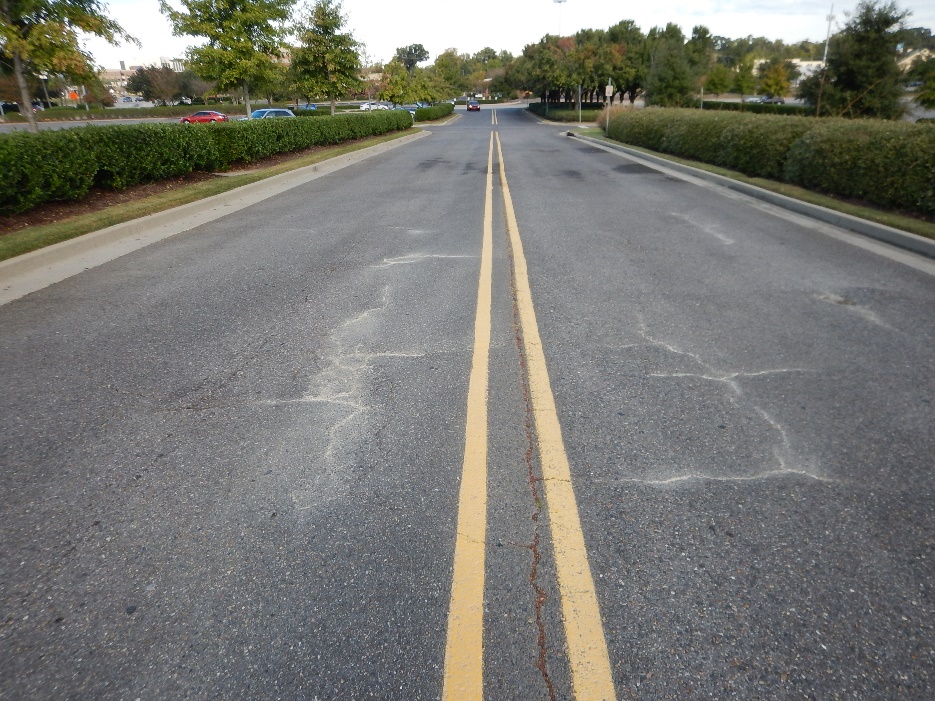
From a cursory glance of the photograph, you could think mud had dropped from a pickup truck. An experienced engineer see that the light-colored markings are mineral fines (the powdery portion of crushed rock) being leeched out of the pavement structure by subsurface water pressure. The source could be, excess water from a high-water table, storm water infiltration into the pavement layers, or irrigation water infiltration. Often it is water flow downhill through the pavement layers.
Note the pavement cracking is in the vehicle wheel paths indicating the excess water is weakening the pavement structure and just beginning to fail the pavement.
The first step in improving this situation is to slow or stop the excess water. This can be done by identifying the source and slowing the water flow. For example, if irrigation is the source, adjusting the timing and flow may be enough. More likely is that water source is not easily controlled, and the excess water will have to be intercepted before it can weaken the pavement structure. The most common method is to install French drains uphill from where the water presents itself. Depending on what part of the country you’re in, they could also be called under drains or sub drains.
To install, a 2- to 3-foot-deep trench is cut and lined with engineered fabric. A bedding of stone is placed at the trench bottom, then a perforated pipe is laid. The trench is then filled an open-graded rock or washed rock. This rock type does not have mineral fines or sand so water can flow freely through the rock to the pipe. Engineering fabric will allow water to flow but stop soil infiltration. This prevents the rock from eventually being clogged. The perforated pipe is connected to a drainage structure.
Next, the pavement should be repaired. If the damage is low severity, a simple overlay could be placed. For more severe damage, the pavement layers will have to be removed and replaced and possibly overlaid.
Zimmer Consultants photographs